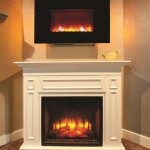Installing a TV Mount on a Stone Fireplace: A Comprehensive Guide
Mounting a television above a stone fireplace can create a visually appealing focal point in a living space. However, this project presents unique challenges due to the nature of stone and the potential for damage to both the stone and the TV. This article provides a detailed guide to installing a TV mount on a stone fireplace, covering essential planning, essential tools and materials, and safe installation techniques.
Before beginning any work, it is crucial to assess the suitability of the stone fireplace for supporting a TV. Different types of stone possess varying degrees of structural integrity. Thin veneer stone, for example, is generally not suitable for direct mounting, as it lacks the necessary strength to support the weight of a television and its mount. Solid stone fireplaces, constructed from materials like granite, limestone, or slate, are more likely to be suitable, but even then, careful consideration must be given to the depth and stability of the stone. Consult a qualified structural engineer or stonemason if there are any doubts about the fireplace's load-bearing capacity. A professional assessment can prevent costly damage and ensure the safe installation of the TV.
Another critical aspect of the initial assessment is the placement of the TV relative to the fireplace. Consider viewing angles from different seating positions in the room. Mounting the TV too high can lead to neck strain and a less-than-ideal viewing experience. The optimal viewing height typically places the center of the screen at eye level when seated. Factor in the size of the TV and the dimensions of the room to determine the most comfortable and ergonomic viewing position. Also, consider the aesthetic impact of the TV on the fireplace. A TV that is too large or too small for the fireplace can appear disproportionate and detract from the overall design of the space. Some people choose to conceal the TV with artwork or a hinged panel when it is not in use, but this adds to the planning and budget of the project.
Furthermore, the location of electrical outlets and cable connections must be considered. Ideally, outlets and connections should be located behind the TV to minimize visible wiring. If existing outlets are not conveniently located, it may be necessary to hire a qualified electrician to install new ones. Running wires through the stone is generally not recommended, as it can compromise the structural integrity of the fireplace. Instead, consider surface-mounted wire management solutions to conceal cables and maintain a clean aesthetic. Planning for these logistical considerations in advance will save time and effort during the installation process.
Key Point 1: Selecting the Right TV Mount and Anchors
Choosing the appropriate TV mount and anchors is paramount for a secure and reliable installation. The type of TV mount will depend on the size and weight of the TV, as well as the desired viewing angle. Fixed mounts are the simplest and most affordable option, ideal for situations where the TV will be viewed from a single, fixed position. Tilting mounts allow for vertical adjustment, which can reduce glare and improve viewing angles from different seating heights. Full-motion mounts offer the greatest flexibility, allowing the TV to be extended, swiveled, and tilted in multiple directions. These are especially useful for rooms with multiple viewing areas or for TVs that need to be accessed for cable connections.
The weight rating of the TV mount must exceed the weight of the TV by a significant margin, typically at least 25%. This provides a safety buffer and ensures that the mount can handle the dynamic forces exerted on the TV during movement or adjustment. Always consult the TV's user manual for its weight specifications. Similarly, the mount should be compatible with the TV's VESA (Video Electronics Standards Association) mounting pattern. VESA patterns are standardized hole patterns on the back of TVs that allow them to be easily attached to mounts. Verify that the mount's VESA compatibility matches the TV's specifications before purchasing.
Selecting the correct anchors for the stone is crucial for a secure installation. Standard drywall anchors are completely unsuitable for stone. Instead, specialized masonry anchors designed for use in stone, brick, or concrete must be used. Wedge anchors, sleeve anchors, and concrete screws are all viable options, but the specific type of anchor will depend on the type of stone and its density. It is recommended to consult a hardware professional or stonemason to determine the most appropriate anchor type for the specific application. The anchors must be long enough to penetrate deeply into the stone and provide adequate holding power. Follow the anchor manufacturer's instructions carefully for proper installation, including the recommended drill bit size and torque specifications.
When purchasing anchors, always opt for high-quality, corrosion-resistant materials. This will prevent rust and degradation over time, ensuring the long-term stability of the installation. Consider using stainless steel anchors, especially in humid environments or near water sources. Never use undersized or substandard anchors, as this can lead to a failure of the mount and potential damage to the TV and the fireplace. Investing in high-quality anchors is a small price to pay for peace of mind and the safety of the installation.
Finally, consider using a mounting plate to distribute the weight of the TV over a larger area of the stone. A mounting plate is a metal plate that is attached to the stone using multiple anchors. The TV mount is then attached to the mounting plate. This distributes the weight more evenly and reduces the stress on individual anchors. A mounting plate can be especially beneficial when mounting a large or heavy TV on a relatively thin or fragile stone surface.
Key Point 2: Proper Drilling Techniques and Dust Control
Drilling into stone requires specialized tools and techniques to avoid damaging the stone and to ensure accurate hole placement. A rotary hammer drill is essential for drilling into hard stone materials. A standard drill will not be effective and can potentially damage the stone or the drill bit. The rotary hammer drill uses a combination of rotation and hammering action to break through the stone, making it easier to drill precise and clean holes. Use carbide-tipped drill bits specifically designed for masonry. These bits are more durable and can withstand the abrasive nature of stone. Choose a drill bit size that matches the anchor manufacturer's recommendations.
Before starting to drill, mark the exact location of each hole using a pencil and a center punch. The center punch creates a small indentation that helps to guide the drill bit and prevent it from wandering. Use a level to ensure that the holes are aligned correctly. Start drilling slowly and apply steady, even pressure. Avoid forcing the drill bit, as this can cause it to overheat or break. As the drill bit penetrates the stone, gradually increase the speed and pressure. Periodically remove the drill bit to clear away debris and prevent it from becoming clogged. Use a vacuum cleaner to remove dust and debris from the hole before inserting the anchor.
Dust control is a critical aspect of drilling into stone. Stone dust can be harmful to breathe and can also create a mess. Wear a dust mask or respirator to protect your lungs from inhaling the dust. Use a vacuum cleaner with a hose attachment to remove dust from the drilling area as you work. Consider using a wet drilling technique, which involves spraying water on the drill bit as you drill. This helps to suppress dust and also cools the drill bit, preventing it from overheating. However, caution should be taken to avoid getting water on electrical components. After drilling, thoroughly clean the area with a wet cloth or sponge to remove any remaining dust.
It is important to avoid drilling too deeply into the stone, as this can weaken its structural integrity. Use a depth gauge or mark the drill bit with tape to indicate the desired drilling depth. Be especially careful when drilling near the edges of the stone, as this is where it is most vulnerable to cracking or chipping. If you are unsure about the depth or angle of the drilling, it is always best to err on the side of caution and consult a professional.
If the stone is particularly brittle or prone to cracking, consider using a pilot hole technique. This involves drilling a small pilot hole first, followed by a larger hole to accommodate the anchor. The pilot hole helps to reduce stress on the stone and prevents it from cracking or chipping. Use a steady hand and avoid applying excessive pressure when drilling the pilot hole.
Key Point 3: Cable Management and Aesthetic Considerations
Effective cable management is essential for a clean and professional-looking installation. Avoid running cables directly across the surface of the stone. Instead, use surface-mounted cable conduits or wire channels to conceal the cables. These conduits are available in a variety of colors and styles to match the decor of the room. Choose a conduit that is large enough to accommodate all of the necessary cables, including power cables, HDMI cables, and audio cables. Secure the conduits to the stone using adhesive strips or small screws. Avoid drilling into the stone to attach the conduits if possible.
Consider using a cable management box behind the TV to hide excess cable length and connectors. This will prevent the cables from hanging down and creating a cluttered appearance. The cable management box should be large enough to accommodate all of the necessary cables and connectors. Ensure that the box is well-ventilated to prevent overheating.
If you are installing new electrical outlets or cable connections behind the TV, ensure that they are properly grounded and protected. Consult a qualified electrician to ensure that the wiring complies with all local electrical codes. Use high-quality surge protectors to protect the TV and other electronic equipment from power surges. Consider using a universal remote control to simplify the operation of the TV and other devices. This will reduce the number of remotes required and make it easier to control the entire entertainment system.
The aesthetic integration of the TV with the fireplace is crucial for a harmonious design. Choose a TV mount that is discreet and unobtrusive. Consider using a black or dark-colored mount that blends in with the TV screen. Avoid using mounts that are too bulky or visually distracting. Pay attention to the placement of the TV relative to the fireplace. Center the TV above the fireplace and ensure that it is level. Consider using artwork or decorative objects to balance the visual weight of the TV and the fireplace.
Minimize the visibility of cables and wires. Use cable ties or Velcro straps to bundle the cables together. Run the cables behind the TV and down the wall to the nearest outlet. Use cable covers or paintable conduits to conceal the cables. Consider using wireless HDMI transmitters to eliminate the need for long HDMI cables. After completing the installation, carefully inspect the area for any loose screws or damaged components. Tighten all screws and ensure that all cables are securely connected. Test the TV to ensure that it is functioning properly.

Mounting A Tv Above Fireplace With Full Tutorial Fixthisbuildthat

Mounting A Tv Above Fireplace With Full Tutorial Fixthisbuildthat

Smarthome And Theater Systems Residential Solutions Photo Album Tv Mount Over Stone Fireplace In New Canaan Ct

Mounting A Tv Above Fireplace With Full Tutorial Fixthisbuildthat

Installing A Tv Wall Mount On Stone Fireplace Lhp

The Ultimate Guide To Mounting Your Tv Over Fireplace 4 Easy Steps Patriot Chimney

Mounting Tv Over Stone Fireplace Kouland Technology Inc

How To Mount Tv On Uneven Stone Fireplace Wall Rock Fireplaces

Smarthome And Theater Systems Residential Solutions Photo Album Tv Mount Over Stone Fireplace In New Canaan Ct

Mantelmount How To Mount Your Tv Above A Fireplace Infarrantly Creative
Related Posts








